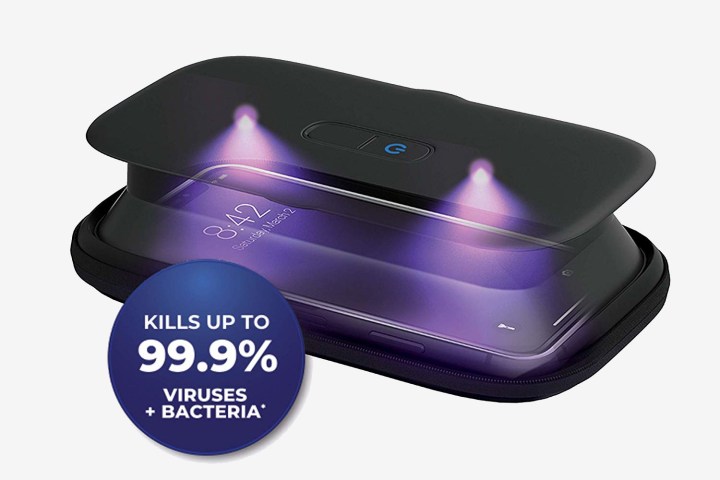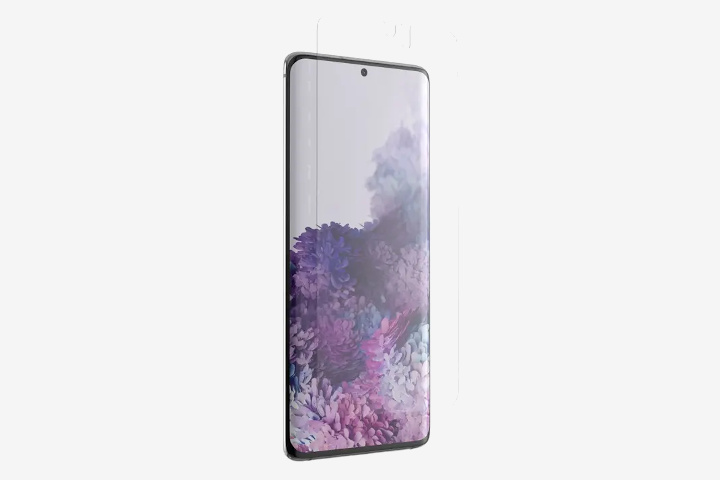Phone screens are high-touch surfaces. We spend hours on our phones and tablets each day and often neglect to clean these devices. Bacteria and germs can get on your phone screen when you use your device, spreading between users.
You should clean your phone and screen tablet regularly to prevent germs from spreading. Unfortunately, most people neglect cleaning their phone or tablet screens. If you haven’t cleaned your screen in a while, these techniques and affordable products work.
UV light

Obviously, if you’re looking to sanitize your phone, water will only get you so far. Since alcohol-based cleaners may damage your phone, they’re out of the question, but UV lamps can get the job done when necessary. The HoMedics UV-Clean Sanitizer has two UV-C lamps that produce a specific wavelength of light, which penetrates the cell walls of bacteria and viruses, destroying them. Just flip your phone to clean either side, and your phone could be sanitized in no time.
The downside of this particular option is it’s unlikely to fit tablets and some of the largest phones. While we haven’t had chance to check, the internal measurements mean the iPhone 12 Pro Max should fit — just — but the Samsung Galaxy S20 Ultra won’t. But if you have a smaller or averagely sized phone, this is an excellent sanitizing option, and it’s good for traveling too, thanks to the portable size.
Cleaning kits

All-in-one cleaning kits come with everything you need to keep your phone reasonably clean, and even come with tools to keep it clean on-the-go too. This kit from Tech Armor does just that, and includes a microfiber cloth, two cleaning solution sprays in different sizes (one for home, one for away), and a set of 20 double-strength cleaning wipes.
Tech Armor claims the cleaning solution is completely free of alcohol and ammonia, so it shouldn’t damage your screen during use, and the soft microfiber cloths are good at picking up any bits of dirt left over from the cleaning cloths, or wiping up the cleaning solution. Use the big bottle while you’re at home, and pack a few wipes and the smaller bottle into your bag just in case you need to give your device a refresher during the day.
A protective case

You may not know this, but some cases have antimicrobial properties that can help to keep your phone clean. Tech21 specializes in this form of case, and it has a number of cases for a range of phones that claim to reduce microbes by up to 99.99%, as well as insulate against drop damage. Best of all, they’re currently 20% off.
But you don’t have to pick an antimicrobial case, as normal cases still help. By keeping your phone’s body or screen from touching dirt, grime, or fingers, you can stop it from being marred, and many cases come with additional benefits, like raised edges to elevate your phone from surfaces. If you’re not sure where to start, we’ve written case guides for a ton of phones, but the best place to start is probably our guide on picking a smartphone case.
An antimicrobial screen protector

You get your fingers all over your device’s screen and then raise it to your face, so it makes sense that area is one of the worst places to accumulate bacteria. Thankfully, there’s a protective option that guards against germs and other microbes. InvisibleShield has added antimicrobial properties to its screen protectors, and it claims the treatment kills 99.99% of bacteria and inhibits the growth of algae, mold, and mildew. That’s a lot of awful stuff you don’t want near your fingers, never mind your face.
InvisibleShield’s screen protectors don’t just add resistance to muck though — adding one of them to your device’s screen will also add protection against other damage, like scratches and bumps. InvisibleShield has a number of different protectors for a variety of phones, so if this interests you, check them out. However, they’re not cheap.
Liquid screen protector and cleaner

Over the years, we have seen some liquid solutions that are designed to clean and protect screens. Luvvitt liquid glass is one such example, one that you can apply to your screen in a few easy steps. You can think of it as liquid glass for your smartphone or tablet. The good thing about this nano-coating solution is that, once applied, it hardens and can repel both liquids and fingerprints. Luvvitt is scratch-resistant and easy to apply. It’s also safe to use on fingerprint scanners, including the in-display ultrasonic fingerprint scanners on the Galaxy S20 range.
Microfiber cloth
The easiest and cheapest way to thoroughly clean your device’s screen is with a microfiber cloth. Unlike paper-based towels, microfiber cloths gently clean the sensitive glass on your smartphone or tablet without the risk of scratches. Microfiber also attracts and removes unwanted oils and dust, whereas other products can simply spread them around.

We recommend stocking up on plenty of these, as they work wonders for cleaning and buffing literally any surface — lenses, computer screens, TVs, and anything similar. Some things, like eyeglasses, come with a microfiber cloth, so you likely already have a number languishing in drawers.
To clean your display, turn off the screen as this allows you to see the dirt and grime better. It’s also mandatory if using water (see below). Move the cloth in a horizontal or vertical direction repeatedly. Once you finish an area of the screen, move on to the next dirty area, and continue to wipe until the surface is completely clean.
For dirtier jobs, or those that require more than a microfiber cloth and a little elbow grease, consider using a minimal amount of water. First, turn off your smartphone and remove the battery (if possible). Next, wet one corner of the cloth with water — do not use soap of any kind while doing this — and clean the surface of the screen in a similar fashion to the method outlined above. Once done, use a dry part of the cloth to remove some of the water (you can also let the screen air dry).
Additionally, we recommend keeping the microfiber cloth clean so that you avoid rubbing the dust and grime you’ve already picked up back on the display. To clean the cloth, simply soak it in a mixture of warm water and soap, rinse the cloth completely, then air dry it fully before using again.
Scotch tape

When a microfiber cloth is out of the question — and you need to clean your screen quickly — a strip of Scotch Tape (or another type of adhesive tape) can work wonders. Just stick the tape to the surface of the screen and peel it off to remove any unwanted dirt and grime. Repeat as often as necessary to clean the entire screen. For this trick, wide body tape works best. It’s a simple trick, but it works well.
Things to avoid
Not every cleaning method is created equal, and there are some methods that initially seem obvious, but should absolutely be avoided. Here are a couple of those.
Alcohol-based cleaners
With a dirty tablet screen, your first instinct might be to reach for the Windex, but you should steer clear of these heavy-duty solvents. Not only could these cleaners damage the protective coating on your device, but if you spray them directly on the phone, they could get inside and cause damage to the ports too.
To get a comprehensive idea of the sea of screen cleaners available, we recommend doing a quick Google search to find the best ones. There are dozens of solvents and solutions available that can help you clean your screen without causing any lasting damage. If you’re savvy with DIY projects, we also suggest that you review the ingredients lists in the cleaning products you find online to see if you could make a more affordable version at home. It’s not worth forking over $60 or $70 on a cleaner if you could’ve just used a microfiber cloth and some water to clean your screen just as thoroughly.
Water is usually all you need to effectively clean off a device’s screen. However, water is not enough to destroy dangerous forms of bacteria. If you’re looking for a screen cleaning solution you can make at home—a bit of alcohol mixed with water can help fight surface germs. Keep in mind, though, that even diluted alcohol can damage your device. Be sure to carefully read over instructions and use caution when cleaning with these solutions.
Paper-based wipes
We can’t emphasize this enough; Do not wipe your smartphone screen with paper towels, tissues, rough cloths, or T-shirt material. Even though it could feel soft to touch, the stitching on these wipes can easily scratch a glass surface. At first, you may not notice when the scratches start to appear, but they’ll become very evident over time. Eventually, the scratches could interrupt your display’s responsiveness or cause your touchscreen to malfunction. Instead, use a microfiber cloth to keep your smartphone’s screen squeaky clean.


